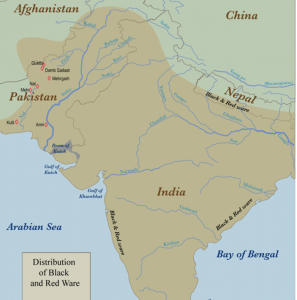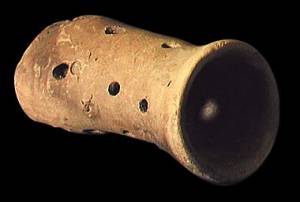Pottery or ceramics or ceramic art refers to the creation of objects that are made up of hard brittle material produced from non-metallic minerals by moulding them while the material is wet and then firing them at high temperatures. They are often made up of clay, porcelain, steatite, etc.
Pottery plays an important role in studying culture and reconstructing the past. Historically with distinct culture, the style of pottery changed. It reflects the social, economic and environmental conditions a culture thrived in, which helps the archaeologists and historians in understanding our past. It holds significant value in understanding cultures where script was either absent or remains undeciphered. Understanding of presence of fire, cooking, storage, sedentary or migratory populace, social stratification can all be developed via studying pottery.
For people, pottery provided opportunity to store, cook, transport, trade and essentially became an expression of artistic creativity.
Pottery is majorly of two types
- Handmade
- Wheel thrown
Handmade pottery is rather a primitive style pottery developed in early ages which with time transforms to wheel thrown. The different motifs drawn on the surface plays an important role in understanding a culture and its beliefs.
Evolution of Pottery
I. Neolithic Age
We find the first reference of pottery in this age. Naturally it is hand-made pottery but during the later period footwheel is also used.
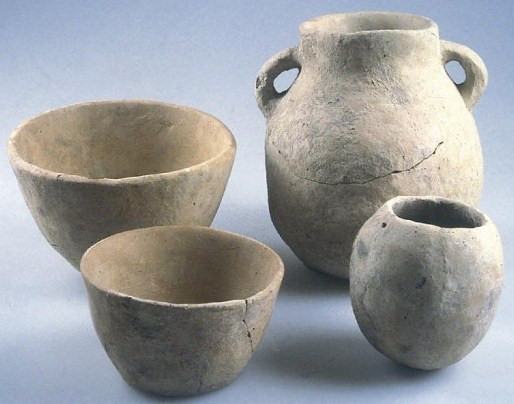
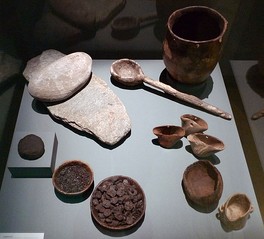
Features
- Unglazed/unburnished that is having rough surface
- Handmade coarse grey pottery
- Material – clay mixed with mica and sand
- Pottery is devoid of any painting
- In many cases twisted rice husk cords were impressed into wet clay for decoration
- Found throughout India including the South. Burzahom – coarse grey pottery
- Included black-burnished ware, greyware and mat-pressed ware
II. Chalcolithic Age
Chalcolithic Era, the first metal age, is marked by the occurrence of distinct cultures in various parts of our country namely – Ahar culture in South Eastern Rajasthan, Malwa culture in Western MP, Jorwe culture in Western Maharashtra, etc.
People of this age used different kinds of pottery.
1. Black-and-red-ware Pottery
Black and red ware seems to have been widely used. Cultures like Ahar-Banas showed the presence of Black and Red ware pottery with white linear designs.
2. Black-on-red ware
Jorwe ware is painted black-on-red and has a matt surface treated with a wash.
3. Ochre Coloured Pottery (OCP)
OCP people are regarded as the junior contemporaries of Harappa.
This pottery is identified with the Copper Hoard Culture that was found in upper Ganga Valley and Ganga Yamuna doab area.
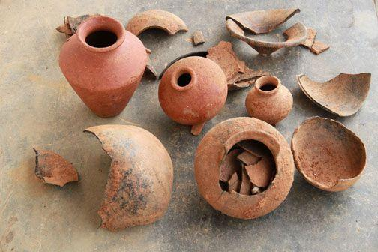
- The colour of the pottery ranges from orange to red.
- The period covered by the OCP culture is roughly placed between 2000 BC and 1500 BC.
- Major sites are – Jodhpura (Rajasthan), Attranjikhera (UP)
- Ganeshwar, located near Khetri copper mines, was initially believed to have OCP but researches have confuted this.
III. Harappan Civilization


Polished Ware Pottery with rough surface
- Both polished and unpolished type of pottery existed
- Pottery generally has a red surface and is wheel thrown although handmade ones too exist
- Polished wares were well fired.
- Most of the pottery is polychrome meaning more than two colours are used to colour the pottery.
- Most of the pottery is utilitarian. Such potteries usually have flat bases
- Geometrical design along with paintings depicting flora and fauna are observed
- Perforated pottery was also found may be used for straining liquor.
- Pottery throughout the civilization was uniform (mass thrown) revealing some form of control and leaving less space of individual creativity
- Presence of luxurious pottery obtained from certain sites reveals economic stratification in the society
1. Mature Harappa
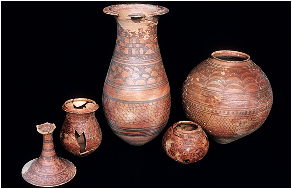
Burial Pottery of Harappa
- Burnished and painted pottery
- Burial pottery was specially and distinctly made
- Reveals the Harappan belief in life after death
- Presence or absence of this pottery in the grave goods reflected social stratification
2. Late Harappa
Ochre Colored Pottery (OCP) – As we know the late Harappan cultures(1900BC – 1200BC) were primarily chalcolithic. Some specific chalcolithic sites show the elements of late Harappan(like use of burnt bricks, etc). These sites have OCP.
Black-grey burnished ware produced on slow wheel – Found in Swat Valley. This resembles the pottery from north Iranian plateau.
Black-on-red painted and wheel turned pottery – Also found in Swat Valley. This shows a connection that Swat Valley was associated with Harappa.
Grey-ware and Painted Grey Ware, generally associated with Vedic people have been found in conjunction with some late Harappan pottery. It has less intricate designs as compared to the early and mature periods suggesting a dilution of the rich culture.
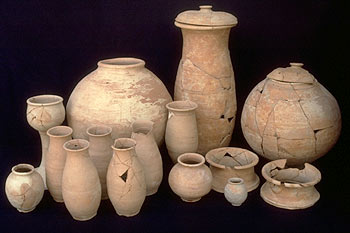
IV. Vedic Era – PGW
The Vedic Era saw the emergence of Painted Grey Ware(PGW) Culture.
The Rig Vedic sites have PGW but iron objects and cereals are absent. Hence it is considered a pre-iron phase of PGW. On the other hand, the Later Vedic sites are considered iron-phase of PGW.
This pottery is an Iron Age pottery found in Gangetic plain and Ghaggar – Hakra valley, lasting from roughly 1200 BC – 600 BC. Mathura was the largest PGW site.
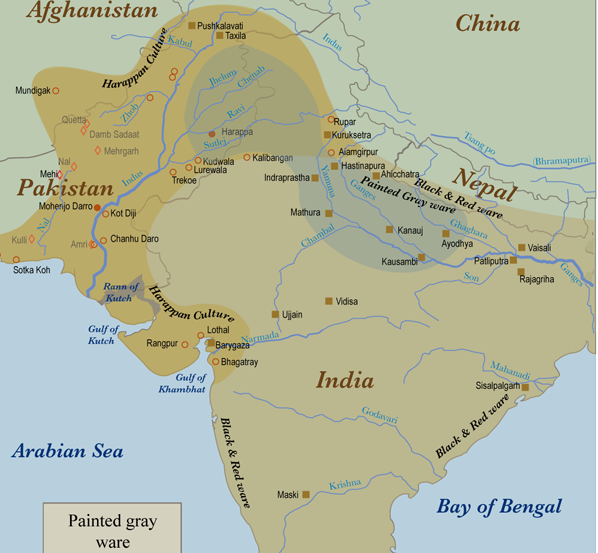
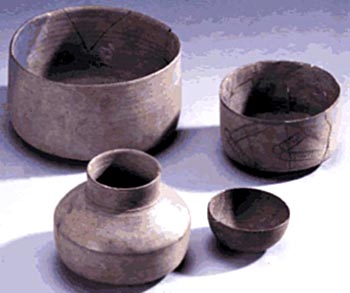
- Characterized by a style of fine, grey pottery painted with geometric patterns in black.
- Are confined to few geographical locations, namely – Punjab, Haryana and upper Ganga Valley. This culture is associated with village and town settlements (but without large cities)
V. Later Vedic Era – NBPW
The later Vedic people were acquainted with 4 types of pottery – Black-and-red ware, black-slipped ware, painted grey ware and red ware.
VI. End of Later Vedic Era – NBPW
Towards the very end of Later Vedic Age around 6th century BC, we see the emergence of 2nd phase of urbanization(1st being Indus Valley Civilization). This era marked the beginning of the Northern Black Polished Ware (NBPW).
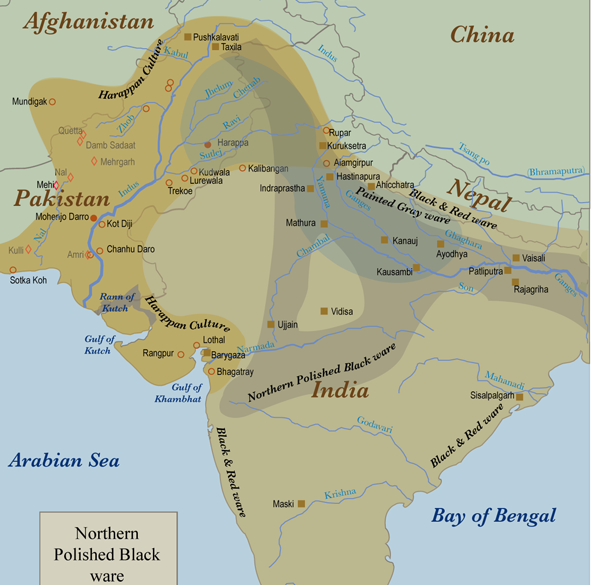
Map showing areas where NBPW pottery was found
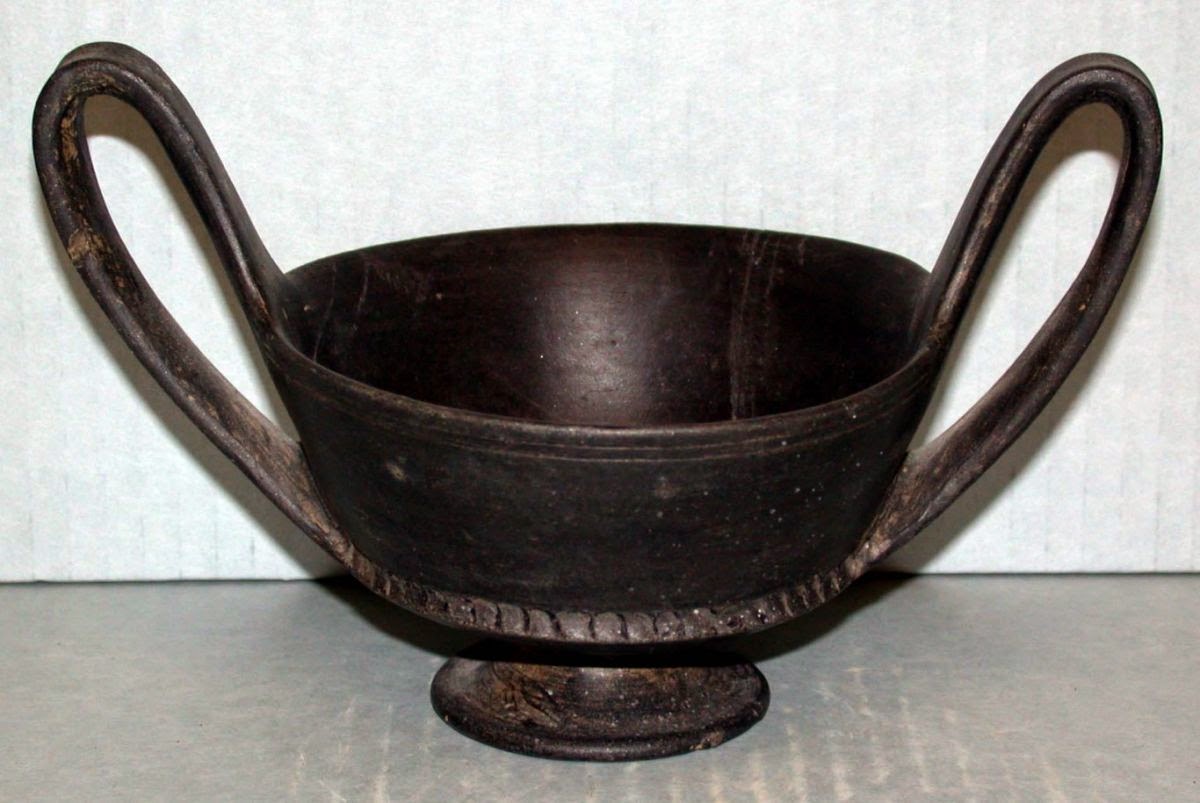
- Glossy, shining type pottery.
- Made of fine fabric and served as tableware for richer class. Considered deluxe pottery only found with the elites revealing societal stratification which was a result of Brahmanical hegemony.
- This pottery continued to exist during the Mahajanapada era.
- Found in Ahichatra, Hastinapur (both in UP), Navdatoli (Madhya Pradesh)
- Classified into two groups – bichrome and monochrome
- Monochrome pottery has a fine and thin fabric. Potted on fast wheel and have a strikingly lustrous surface. 90% of this type is jet black, brownish black and bluish black and 10% have colours like pink, golden, brown among others.
- Bichrome pottery is found less. It shows all the features of monochrome except that it shows combination of two colours.
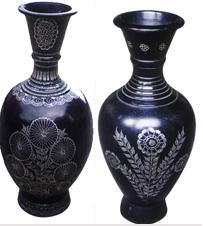
A Bichrome pottery with two colours
VI. Megalithic Era
This culture is placed between- 3rd Century BC to 1st Century AD. Megaliths refers to monuments constructed of big (mega) stones (lith). This culture is particularly known for its large stone graves. In the South this age is characterized by the use of iron.
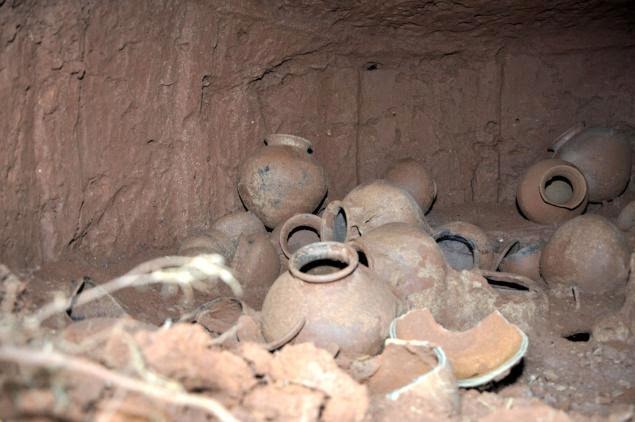
Megalithic Pottery found in Kerala
- Well baked and durable
- Wheel thrown
- Bulk of these are plain however, a sherd from Koldihawa reveals black painting on the surface.
- It has been excavated throughout India but majorly from the South. Mostly in Vindhyas.
- They were used as grave goods revealing belief in life after death.
References and image credits
- http://www.visual-arts-cork.com/pottery.htm
- https://books.google.co.in/books?id=Wba-EZhZcfgC&pg=PA227&lpg=PA227&dq=neolithic+pottery+india&source=bl&ots=zSieDln1p6&sig=jMQOXkaE0Ub3nGScBVc66b5vCNc&hl=en&sa=X&ved=0ahUKEwjIq7vEoa7RAhVFto8KHTkSAdsQ6AEIXjAN#v=onepage&q=neolithic%20pottery%20india&f=false
- https://www.google.co.in/search?q=neolithic+pottery+india&rlz=1C1GKLB_enIN652IN652&source=lnms&tbm=isch&sa=X&ved=0ahUKEwi34JWmpq7RAhVJtI8KHYSRCpQQ_AUICCgB&biw=1106&bih=650#tbm=isch&q=harappan+pottery+&imgrc=bVQvkNLg2TpIHM%3A
- https://books.google.co.in/books?id=nKJiBUFrmfoC&pg=RA1-PA27&lpg=RA1-PA27&dq=ganeshwar+OCP&source=bl&ots=ldv-asrh-c&sig=Uv6m0rf8pkfck4Uws9H9TCP5ZPs&hl=en&sa=X&ved=0ahUKEwjP36_K2rHRAhVMtY8KHaSJBFsQ6AEIGTAA#v=onepage&q=ganeshwar%20OCP&f=false
- http://www.facts-about-india.com/copper-phase.php
- http://huntingtonarchive.org/resources/historicalMaps.php
- http://www.ancient-asia-journal.com/articles/10.5334/aa.06111/
- https://en.wikipedia.org/wiki/Painted_Grey_Ware_culture
- https://en.wikipedia.org/wiki/Northern_Black_Polished_Ware
